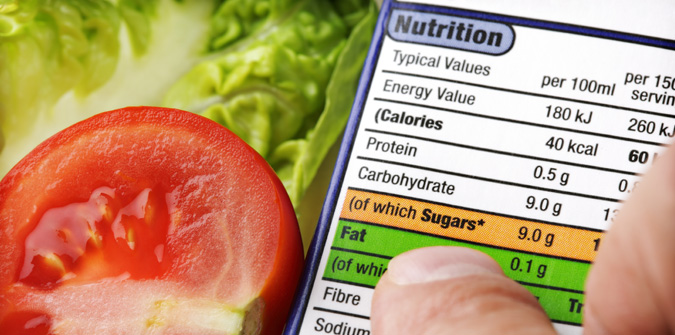Understanding UK food labels
Understanding food labels is really important when you are choosing pre-packaged foods, or drinks. Reading the labels means that you can make a better informed choice about the foods you are buying. This will help you to decide if the produce is a ‘healthier choice’.
Check out the ingredients lists
This will tell you the main ingredients. They are listed in descending order. The main ingredient used in this product is pinto beans which is listed first and makes up 85% of the product. If sugar is listed high on the list you know that the product is going to be high in sugar, or if cream or butter listed as one of the first ingredients this will indicate it is a high fat product.
Ingredients list
Pinto beans, (84%), onion, red pepper, water, salt, cumin, chillies, chilli extract
The nutritional information
This tells you how many calories, and grams of protein, fat, sugar, fibre and sodium are in 100g of the product. Sometimes the label will also list the calorie content per portion.
Nutrition Information (Typical value per 100g)
Energy 91 kcal
Protein 5.2g
Carbohydrate 16.2g (of which are sugar 0.9g)
Fat 0.6g
Fibre 3.9g
Sodium 0.3g
The label for spicy refried beans above shows the sugar content is low at 0.9g per 100g. To check salt content times the sodium figure by 2.5. In this product the salt content is 0.75g. Remember that your ideal salt intake per day should be less than 6g.
Check out the ingredients lists
This will tell you the main ingredients. They are listed in descending order. The main ingredient used in this product is pinto beans which is listed first and makes up 85% of the product. If sugar is listed high on the list you know that the product is going to be high in sugar, or if cream or butter listed as one of the first ingredients this will indicate it is a high fat product.
Ingredients list
Pinto beans, (84%), onion, red pepper, water, salt, cumin, chillies, chilli extract
The nutritional information
This tells you how many calories, and grams of protein, fat, sugar, fibre and sodium are in 100g of the product. Sometimes the label will also list the calorie content per portion.
Nutrition Information (Typical value per 100g)
Energy 91 kcal
Protein 5.2g
Carbohydrate 16.2g (of which are sugar 0.9g)
Fat 0.6g
Fibre 3.9g
Sodium 0.3g
The label for spicy refried beans above shows the sugar content is low at 0.9g per 100g. To check salt content times the sodium figure by 2.5. In this product the salt content is 0.75g. Remember that your ideal salt intake per day should be less than 6g.
The Food Standards Agency has issued useful guidelines to help you decide if the product is high in fat or sugar.
Nutrient |
High per 100g |
Low per 100g |
Sugar |
> 15g |
< 5g |
Fat |
> 20g |
< 3g |
Saturated Fat |
> 5g |
< 3g |
Traffic light labels
Recently many of the large supermarkets have made adopted the traffic light system to help inform consumers about ‘healthier choices’. This traffic light system is on the front of the product which means that consumers can see at a glance the total fat, saturated fat, sugar, salt and calorie content.
Red means high, amber means medium and green means low. The more green lights, the healthier the choice.
If you buy a food that has all or mostly green lights, you know straight away that it’s a healthier choice. An amber light means the product contain moderate amounts of the nutrient, so neither high nor low. A red light means the food is high in fat, salt or sugar, and these are the foods we should be cutting down on. Try to eat these foods only on rare occasions.
Recently many of the large supermarkets have made adopted the traffic light system to help inform consumers about ‘healthier choices’. This traffic light system is on the front of the product which means that consumers can see at a glance the total fat, saturated fat, sugar, salt and calorie content.
Red means high, amber means medium and green means low. The more green lights, the healthier the choice.
If you buy a food that has all or mostly green lights, you know straight away that it’s a healthier choice. An amber light means the product contain moderate amounts of the nutrient, so neither high nor low. A red light means the food is high in fat, salt or sugar, and these are the foods we should be cutting down on. Try to eat these foods only on rare occasions.

